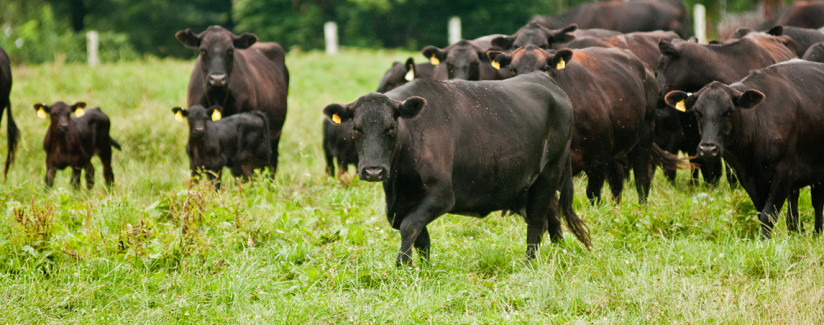
“Regular use of antibiotics in healthy cows, pigs and chickens has led to increased antibiotic resistance in humans eating meat products.”
Antibiotics are an integral component of animal health. All uses of antibiotics improve animal health, and these improvements in animal health can substantially improve human health because healthier animals lead to safer food. All uses of antibiotics also have the potential to increase antibiotic resistance. While all antibiotic uses can select for resistance, the high dose therapeutic uses that are used to treat sick animals may be of the highest concern. The best way to avoid the need for high dose, clinically important antibiotics is to keep the animals healthy in the first place, and low dose antibiotics used for growth promotion and disease prevention can help. While humans eating meat products can be exposed to bacteria that are resistant to antibiotics, the risk for the average American is negligible given the long chain of events required to produce measurable human health harm.
True or Not? “Regular use of antibiotics in healthy cows, pigs and chickens has led to increased antibiotic resistance in humans eating meat products.”

Randy Singer, PhD, DVM, MVPM says:
The best way to avoid the need for high dose, clinically important antibiotics to keep the animals healthy in the first place, and low dose antibiotics used for growth promotion and disease prevention can help.
Maintaining a healthy animal population is essential for ensuring a safe and secure food supply. The strategic use of antibiotics during the life of the animal is an important component of keeping animals healthy. Antibiotics are given to animals for very specific reasons, and there is nothing routine about these uses; all antibiotic uses have defined purposes and all are part of an overall animal health maintenance program.
Antibiotics are used in animal agriculture in four major ways: disease treatment, disease control, disease prevention, and growth promotion. Briefly, disease treatment refers to the use of the antibiotic in an ill animal. Disease control refers to the use of the antibiotic in a population of animals during a time of illness. Not all of the animals receiving the antibiotic are necessarily ill at the time of antibiotic administration; this antibiotic use stops the disease from spreading. Disease prevention refers to the use of the antibiotic in an animal or in a population of animals at a time when it is known that the animals are susceptible to disease. Finally, growth promotion refers to the use of the antibiotic in a low-dose fashion to improve the weight gain and feed efficiency of the animal. All four of these uses result in an improved health of the animal receiving the antibiotic, and all of these uses can be administered via the feed or the water because the only realistic way to give antibiotic to populations of animals, such as a flock of chickens, is through the feed or the water.
Even though all four of these uses can improve the health of the animal, there has still been confusion about them. One area of confusion is related to the amount of antibiotic that is administered. Because disease control, disease prevention and growth promotion can use smaller amounts of the antibiotic than is given to the sick animal during disease treatment, these uses have sometimes been labeled as “subtherapeutic” or “nontherapeutic”. These terms imply that the low-dose uses do not have an effect on the health of the animal. As was seen in Denmark and other countries that have limited these low-dose uses (1), animals receiving an antibiotic at low doses are often healthier than if they had not received the antibiotic, and thus these terms are misnomers.
When an antibiotic is fed to animals for growth promotion or disease prevention, each individual animal is fed relatively small amounts of the antibiotic. Reports that attempt to quantify the total amount of antibiotic fed to animals are often misleading because it is the concentration of antibiotic to which an individual animal is exposed that affects the development of resistance and not the total amount of antibiotic used in a country during a year (4). In Denmark, the total amount of antibiotic administered to animals appeared to decrease following the ban of growth promotion antibiotics (1). However, when measured as the number of doses administered to animals, there was an increase in antibiotic consumption following the ban. This is due to the fact that the treatment of sick animals necessitates a much higher dose per animal than the low amounts given to animals on a per capita basis for growth promotion and disease prevention purposes. The question then becomes which of these uses (low-dose for growth promotion / disease prevention versus high-dose for disease treatment) presents less risk for bacteria becoming antibiotic resistant.
To address this question we must first ask “What exactly is antibiotic resistance?” Antibiotic resistance refers to the ability of a microorganism to survive the effects of an antibiotic. When an antibiotic is applied to a population of bacteria, the bacteria must find a way to survive. The antibiotic will either kill or suppress the bacteria that are susceptible to the antibiotic. For this reason, the antibiotic is said to select for resistant bacteria because only the resistant ones can withstand the pressure imposed by the antibiotic. Many studies have shown that high doses of antibiotics used for the treatment of disease result in the potential for the development and spread of antibiotic resistance (3,5). Results like these are not easily found for low-dose applications of antibiotics in animal feed. Furthermore, the antibiotics that are used in animals for disease treatment are often in the same class as those used in human hospitals. Antibiotics used for growth promotion and disease prevention are often older antibiotics with much less importance to human health. Consequently, does the feeding of antibiotics to animals at low doses increase levels of resistant bacteria that can be transferred to humans via food?
One way to approach this question is through a scientifically-rigorous process known as risk assessment. Following the format set forth by the FDA Center for Veterinary Medicine, an analysis was conducted to assess the risk that the agricultural use of a family of antibiotics known as macrolide antibiotics poses to human health (2). The concern is that agricultural use of macrolide antibiotics, which are also used in human medicine, could compromise the efficacy of these antibiotics in human medicine and potentially increase the number of macrolide-resistant bacterial infections in people. In this model, all macrolide antibiotic uses in animal agriculture in the U.S. posed a very low risk to human health. Findings such as these have been corroborated by other risk assessments.
There may be some reduction in resistance when certain antibiotic uses decrease. In Denmark, for example, resistance to some antibiotics in some bacteria in the human community and in animal populations decreased following the cessation of antibiotics fed to animals for growth promotion. However, no health benefits were observed in human hospitals following the ban, and more animals became sick, thus necessitating the increased use of higher doses of clinically-important antibiotics.
Conclusion
Antibiotics are an integral component of animal health. All uses of antibiotics improve animal health, and these improvements in animal health can substantially improve human health because healthier animals lead to safer food. All uses of antibiotics also have the potential to increase levels of antibiotic resistance. Healthy animals are fed antibiotics to keep them healthy. When these uses are stopped, animal illness levels can increase, and these sick animals then need to be treated with antibiotics at high doses and with antibiotics that are important to human health. While all antibiotic uses can select for resistance, the high dose therapeutic uses that are used to treat sick animals may be of the greatest concern. The best way to avoid the need for high dose, clinically important antibiotics is to keep the animals healthy in the first place, and low dose antibiotics used for growth promotion and disease prevention can help. While humans eating meat products can be exposed to bacteria that are resistant to antibiotics, it is impossible to become ill from a resistant bacterium via food if the bacterium is not ingested in the first place. Nothing replaces the need for good food handling practices and proper food safety.
References
1. DANMAP. 2009. DANMAP 2008 – Use of antimicrobial agents and occurrence of antimicrobial resistance in bacteria from food animals, foods and humans in Denmark.2. Hurd, H. S., S. Doores, D. Hayes, A. Mathew, J. Maurer, P. Silley, R. S. Singer, and R. N. Jones. 2004. Public health consequences of macrolide use in food animals: a deterministic risk assessment. J.Food Prot. 67:980-992.
3. Singer, R. S., S. K. Patterson, and R. L. Wallace. 2008. Effects of therapeutic ceftiofur administration in dairy cattle on Escherichia coli dynamics in the intestinal tract. Appl.Environ.Microbiol.
4. Singer, R. S., R. Reid-Smith, and W. M. Sischo. 2006. Stakeholder position paper: Epidemiological perspectives on antibiotic use in animals. Prev.Vet.Med. 73:153-161.
5. Tragesser, L. A., T. E. Wittum, J. A. Funk, P. L. Winokur, and P. J. Rajala-Schultz. 2006. Association between ceftiofur use and isolation of Escherichia coli with reduced susceptibility to ceftriaxone from fecal samples of dairy cows. Am.J.Vet.Res. 67:1696-1700.
“20130712-AMS-LSC-0453” by U.S. Department of Agriculture is licensed under CC BY 2.0.


























